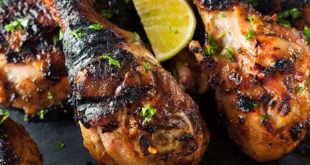 Spring is well underway in most corners of the United States, and the warmer weather has every grillmaster itching to get some beef patties sizzling in the backyard. For restaurants, the spring thaw can also be a great time as well, as you clean off the patio furniture and start setting up the umbrellas of summer.
Spring is well underway in most corners of the United States, and the warmer weather has every grillmaster itching to get some beef patties sizzling in the backyard. For restaurants, the spring thaw can also be a great time as well, as you clean off the patio furniture and start setting up the umbrellas of summer.
One thing is certain: everyone is in the mood for a burger. Whether your restaurant is known for killer patties or not, customers are going to be ordering two slices of bread with a thick, juicy slab of beef in the middle more often in the next three months than any other time of year.
This presents a great opportunity for any restaurant to place their own creative stamp on the classic American hamburger. This menu item has been prepared in more ways and with more variations than any other, and yet it’s popularity still runs strong through most of the American public.
The popularity of the hamburger is a double-edged sword for the restaurateur: you know it will be a strong selling menu item, but everyone is also a backyard burger slinger, which means everyone is a connosseur. If you’re going to market great tasting burgers to guests for any price higher than McDonald’s dollar menu, you’d better have a tasty surprise waiting in the wings.
And that’s where you’d do well to take some advice from a true grillmaster – J. Kenji Lopez-Alt, an MIT grad who has developed a true science for grilling the perfect burger. His blog, The Burger Lab, is devoted to the perfection of the hamburger. Recently The Burger Lab posted 10 Tips For Making the Perfect Burger, and a few of them are particularly applicable to restaurants:
Tip #1: Buying Store-Bought Ground Beef is a Crap Shoot
You’re never quite sure when it was ground, what part of the cow it came from, or even how many different cows are in the package. Not to mention baddies like e.coli, freshness issues, rough handling, and tight shrink-wrap packaging that can lead to leaden patties.
If you’ve never ground beef yourself, the task may seem daunting at first, but take it from me: once you grind, you never rewind. Your restaurant probably already has a mixer or a food processor; getting a meat grinder attachment is relatively inexpesive and can help you create a masterpiece of a burger for your summer menu.
Tip #2: Keep Everything Really Cold
Until your burgers are fully formed, heat is their mortal enemy. Warm fat is soft and pliable, and tends to stick to your hands and work surfaces. And if that fat’s on your hands, then it ain’t in the burger.
When grinding your own meat (and I certainly hope you are), make sure that everything—the feed shaft, the grinding blades, the plate, and the meat—is well chilled to avoid fat smearage. I keep my meat grinder stored in the freezer so I’m ready to grind at moment’s notice.
This should be easy for any restaurant to accomplish – just stick everything in the walk-in!
Tip #3: Weigh and Size Your Patties
Weighing your meat as you divide it and measuring your patties as you form them will ensure that all your burgers will be uniform in shape and size, which in turn will guarantee that they all cook at the same rate. A scale and a good eye are all you need (though the truly OCD like myself will want a ruler as well).
Uniformity is good, but the most important thing here for a restaurant is portion control. You want consistency in patty sizes so that you can better manage your food cost and profit margins.
Tip #4 Choose Your Bun Wisely
Buns come in all shapes, sizes, densities, and flavors. Make sure you’ve got the right one for the job at hand. For smaller, thinner patties, like a good Shake Shack-style griddled burger or small Northern Jersey-style sliders, soft, sturdy, and slightly sweet Martin’s Potato Rolls set the benchmark, although any soft, squishy, standard-issue supermarket bun will do.
A bigger, pub-style burger can overwhelm a soft bun with juices, soaking through and dissolving the base before the burger even hits your table. Toasting the bun can mitigate some of these effects, but for the most part, you’re better off selecting a sturdier roll, or if you’ve got one nearby, a custom burger bun from an artisan bakery. Brioche has its adherents, but I prefer my buns to be a little more bland, so as not to compete with the flavor of the beef.
Do avoid anything with an overly chewy crumb or a tough crust, unless you want your burger to suffer from the dreaded backslide.
A great burger is nothing without the bun. There is nothing more frustrating than getting a good burger with a soggy bun.
These grillmaster tips can help you turn your restaurant into everyone’s favorite backyard. You just can’t go wrong with a great tasting hamburger on your menu as we head into the summer season. These simple tips will help ensure your burgers are the talk of the town.
 Corner Booth Blog | TundraFMP Restaurant Supply, News & Equipment Blog
Corner Booth Blog | TundraFMP Restaurant Supply, News & Equipment Blog



